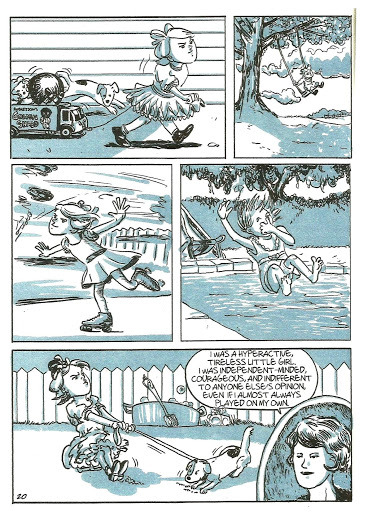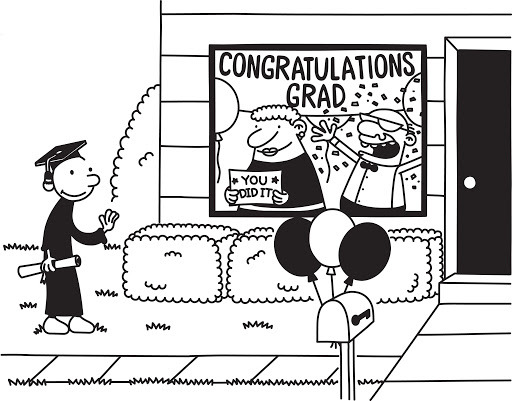Don't wanna be here? Send us removal request.
Text
Manga, Graphic Novel, and Doodle Fiction
Hello! Welcome to my first ever blog post. In this blog you will know about 21st Literature Genres. You will be knowing their meaning, characteristics, and differences. You will be able to identify their structure and elements.
Philippine literature withstood time and periods and has evolved through generations. For every period that passed, different genres appeared, and these literary works rooted from all regions reflecting their culture, society and lifestyle. 21st century literature is anything that was written and published in the year 2000s. It is a bit too early to give a definite and elaborate description of the 21st century literature in the Philippines and the world. It is possible, however, to approach contemporary literature as a reaction to and dialogue with existing forms of expressive culture. As we engage in technology more and more, we create and discover more existing forms of expressive culture as well. We have a wide range of resources through the internet and this gave opportunities to people, especially the youth, to begin writing and expressing their thoughts, ideas, and feelings.
Manga refers to Japanese comic books, the series of which are often made into Japanese cartoons, or anime. The word is pronounced maw-nnnnn-gah. In Japanese, it is actually three syllables, although the middle "N" is spoken very quickly. The word manga can be translated as “humorous pictures.” In Manga artistic and storytelling way is considered. The word was first used in 1798 to describe the picture book Shiji no yukikai of Kyoden Santo. Manga follows the traditional style as found in Japan. Japanese Manga is to be read from right side to left, opposite of traditional American books. It is usually much smaller and collected in small volumes, they appear like small books. There are graphic elements of Manga that comes in two forms: Conventional and Non-Conventional. Conventional graphic emblems like sweeping lines to show motion and bubbles encapsulating to show speech. Non-conventional like visual symbols or metaphors. These elements makes emotional use of non-narrative signs in the backgrounds of their panels. There are different types of Manga; Shonen- Boy’s Manga (Naruto, Bleach, One Piece) • Shojo- Girl’s Manga (Sailormoon) • Seinen- Men’s Manga (Akira) • Josei- Women’s Manga (Loveless, Paradise Kiss) • Kodomo- Children’s Manga ( Doraemon, Hello Kitty ).
Example of a Manga conversation of a Manga story Another Life:

The next 21st literary literature is graphic novel. A graphic novel, as its name suggests, is a novel that tells a complete story via illustrations. A graphic novel will offer the type of resolution that one expects from a novel, even if it is part of a series. It is a book made up of comics content. Although the word "novel" normally refers to long fictional works, the term "graphic novel" is applied broadly and includes fiction, non-fiction, and anthologized work. Graphic novels share all the key characteristics of traditional novels; a clear beginning, middle, and end, a central narrative (or A-story) supplemented by optional B-stories, character development and personal journeys, thematic messaging, and precise, carefully considered dialogue and narration. Graphic novels permit their images to do the vast majority of the storytelling, with dialogue bubbles and narration boxes to help elaborate the story. There are also elements of graphic novels like; Panels, Gutter, Word or speech balloons, Narration, Sound effects, Motion lines, and background colors.
Example of a Graphic Novel SuperZelda:

The last literary genre in the 21st century that will be explained in this vlog is the Doodle Fiction. A doodle fiction is a literary presentation where the author incorporates doodle drawings and hand written graphics in place of traditional font. Drawings enhance the story, often adding humorous elements that would be missing if the illustrations were omitted. Doodle fiction has simple drawings that can have concrete representational meaning or may just be co posed of random and abstract lines. In traditional way of doodle, it has simple drawings with concrete meanings or generally due to jovially net of boredom. Doodle fiction has its elements; the plot- it is the structure of interrelated action arranged by the author. Characters- persons in a narrative work of art who plays role. Setting- the time and the geographic location within the story. Person of view- the eyes through which a story is told. Theme- the central idea explored in the story. And, style- design or make in a particular form.
Example of Doodle Fiction of a story Diary of a Wimpy Kid:

Contemporary writers often consciously draw inspiration and ideas from the writers who have come before them. As an outcome, many works of 21st literature deal with the events, movements and literature of the past in order to make sense of the current times. In addition, the technological developments of the 21st century have directed other writers to theoretically write about the future, usually to comment on the present and suggest introspection. Additionally, many 21st century works of literature explore what it means when all of humanity’s experiences are filtered through technology. These are just among many themes that 21st century literature covers. Among these are of course, love, sex, family, religion, but approached in a different way. Since we are in the age of technology, we use them to impart and experience literature to make it more interesting especially to the young ones.
In the new educational system that the Philippines is currently under which is the K+12 program, students are also entitled to learn the new literary genres that we have in the 21st century. In this guide, we will find the different characteristics of the 21st century literature in the Philippines and their genres, along with their representative texts that tackles their relevance to our current situation.
“It takes a great deal of history to produce a little literature”
- Henry James
0 notes